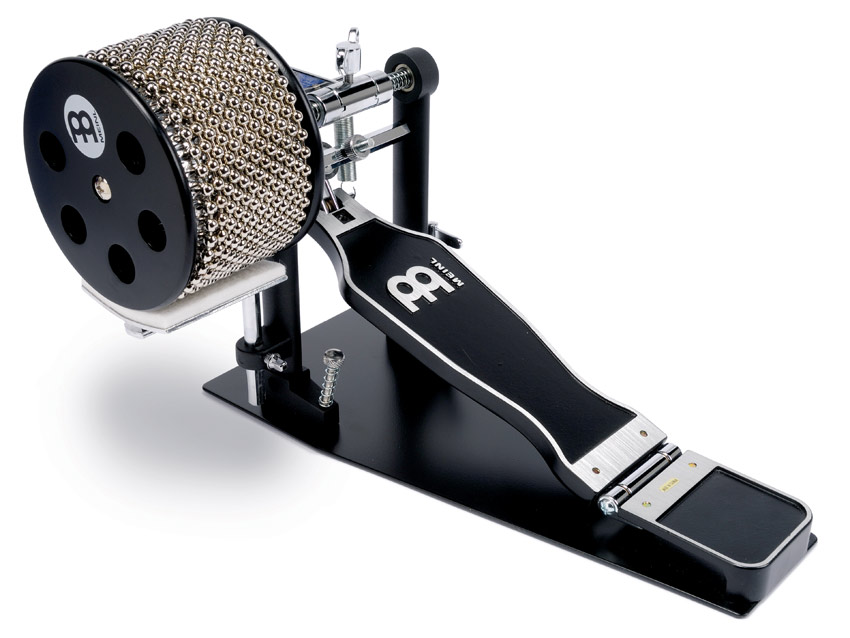MusicRadar Verdict
Obviously the foot-cabasa isn't going to appeal to every player out there, but it does offer a unique new voice for the feet. Integrating one into your drum kit, hand percussion set-up or even with a cajon might take a while to get comfortable with, but will offer new and exciting possibilities that previously needed two hands to achieve.
Pros
- +
A unique, almost revolutionary piece of kit.
Cons
- -
You can't mount the cabasa on the right-hand side - not good for lefties!
MusicRadar's got your back
Just when you thought that percussion giants Meinl had exhausted its highly impressive creative output, along comes its new revolutionary foot-operated cabasa.
As you're probably aware, the nature of the cabasa means that it traditionally needs two hands to unleash its full sound potential. So this product marks a significant breakthrough in playing this popular piece of percussion.
Build
The basic premise was to construct a way of playing Meinl's popular Turbo cabasa with one foot only. In the beginning, many might well have thought that the idea was completely out of the question. But Meinl has silenced the sceptics and achieved exactly what it set out to do.
The Turbo cabasa itself is mounted on the left-hand side of what initially looks like a fairly conventional meaty, black powder-coated bass drum pedal. This rather substantial pedal has an integrated base-plate and a drum key housed in a hole at the bottom for quick adjustments of the pedal's action.
"With the Foot Cabasa, Meinl has silenced the sceptics and achieved exactly what it set out to do"
The cabasa features a stainless steel cylinder and steel ball-chains for a loud, cutting response. One great feature is the adjustable thick felt-lined mute that can be engaged or disengaged via a drum-key adjustment screw underneath the cabasa itself. This replicates the action of the weaker hand that traditionally 'cups' the cabasa.
Hands on
The foot-cabasa can be set to produce single strokes in a forward motion only when the wing nut is loosened and, although the pedal was a touch noisy, this can produce subtle clave and other staccato rhythms nicely. That said, you'll need to have a great deal of foot control, as some of the strokes can be missed with this particular setting.
Tightening the wing-nut produces a direct 'to and fro' motion that's much more like the traditional cabasa sound and consequently can be quite authentically incorporated as a result.
Want all the hottest music and gear news, reviews, deals, features and more, direct to your inbox? Sign up here.
When you first try the foot-cabasa, you'll have to seriously adjust your technique because the pedal's action is very subtle and will take many practice sessions to master. You'll have to experiment with both foot-up and foot-down techniques to achieve smooth eighth and 16th note rhythms - particularly the afro-Cuban 6/8 feel that's so effective with the foot-cabasa.
